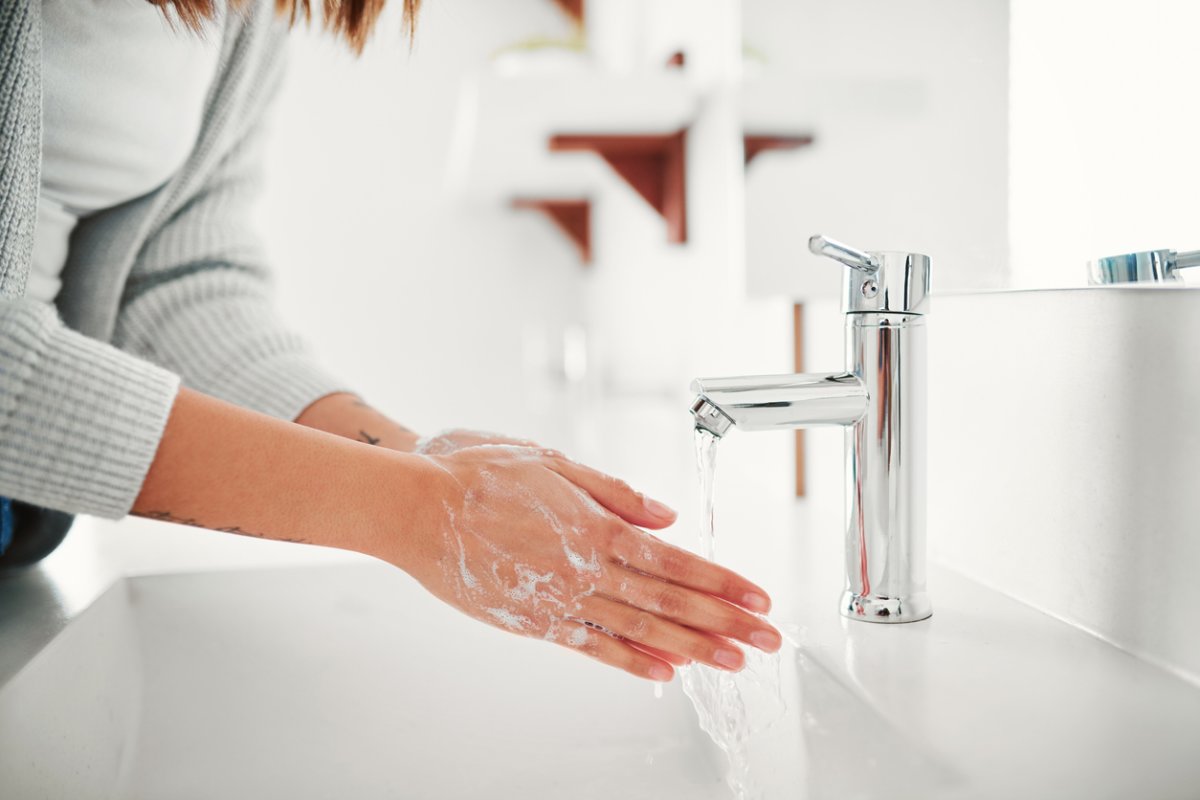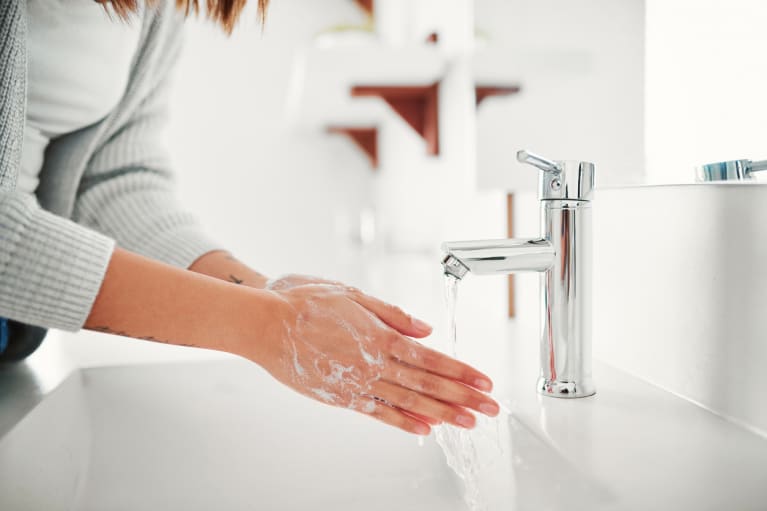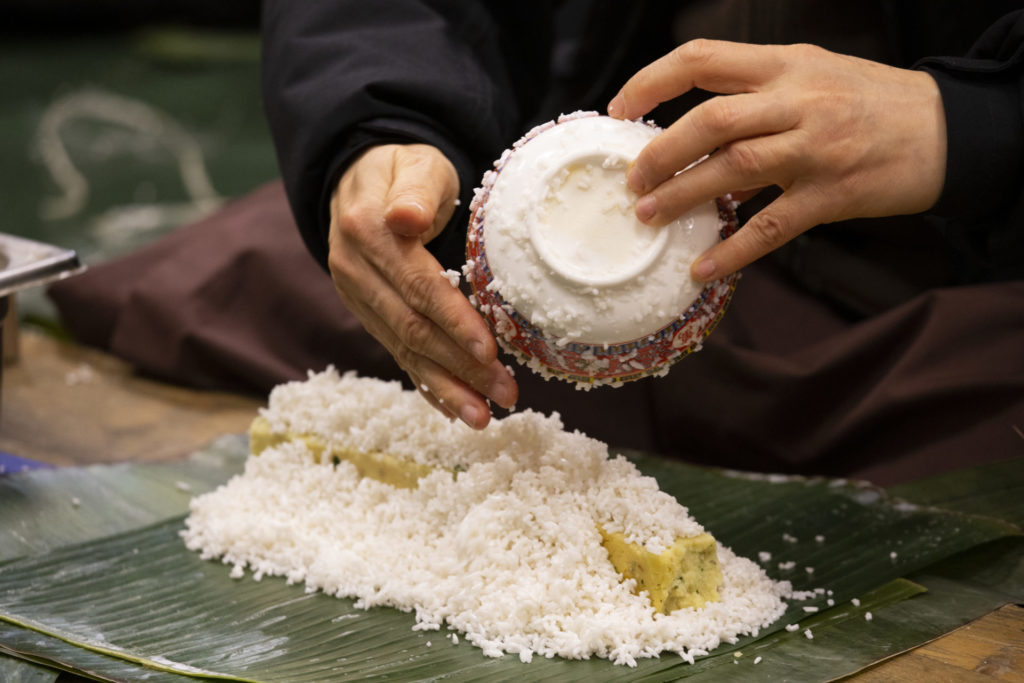4 Signs Of Black Mold You Should Never Ignore, From A Remediation Expert
It's important to act on them.


August 23, 2022 — 12:28 PM
While indoor mold growth, in general, isn’t a commonly discussed topic in society, "toxic black mold" has made waves in the news over the years. Unfortunately, this has led to a long list of misconceptions, like that all black mold is toxic and that it’s the only type of mold to worry about at home.
It’s important to understand what “black mold” actually is, why it's harmful, and how to identify it at home before it becomes a problem.
Over 100,000 species of mold have been identified by researchers so far, and they come in a variety of shapes and colors. Many of these species can be black in color, such as Aspergillus and Chaetomium. That being said, discussions regarding black mold typically refer specifically to a species called Stachybotrys chartarum.
Health Coach Certification
A best-in-class, board-certified curriculum grounded in a holistic approach to healing.

All species of mold reproduce by creating microscopic spores and releasing them into the surrounding area. Some species of mold, like Stachybotrys chartarum, also release microscopic toxins called mycotoxins when threatened, which are naturally toxic to the human body. To make matters more complicated, some species of mold (including Stachybotrys chartarum) can create multiple types of mycotoxins.
Having spores and mycotoxins in your home can harm your indoor air quality and contaminate your surfaces. And since these particles are small enough to be inhaled, ingested, and absorbed into the body, they can trigger adverse health reactions.
The tricky aspect of indoor mold growth is that everyone responds differently to exposure. Adverse health effects can vary greatly from person to person. Genetics, length of time exposed, volume of exposure, and preexisting conditions all play a role.
That being said, common symptoms include:
Signs of black mold at home.
These are four top signs that you might have black mold at home:
The first and easiest way to determine if there’s indoor mold growth is to grab a flashlight and check out hotspot areas in the home. Black mold will appear black in color, but any abnormalities could indicate contamination. Hotspot areas to check include:
As a water-loving mold, Stachybotrys chartarum requires high levels of moisture to grow in a home. This is why you'll always want to check water-damaged areas for signs of black mold. Visual issues to look out for include:
If you don’t find any visible mold, that still doesn’t mean that there isn’t a problem. The growth could be in a hidden location like the inside of a wall or underneath the flooring.
In this case, rely on your sense of smell to help determine if there’s an issue. Mold growth often creates a damp, musty, earthy odor due to the release of gases called microbial volatile organic compounds (MVOC). If you constantly smell dampness in the home, there’s a good chance that there’s contamination.
4. Unexplained chronic symptoms.
Sometimes, mold growth is hidden and doesn’t create an odor. In cases like this, pay attention to your body and how you feel at home. Have you developed chronic symptoms over time that no doctor can pinpoint a root cause for? Do they flare up anytime you’re hanging out at home? Never ignore chronic symptoms or accept them as the “new norm.” Instead, attempt to pinpoint what is causing your body to send out warning signals.
Home health plays a huge role in our ongoing wellness. The safer and less contaminated these spaces are, the healthier and happier our bodies will be. Like any kind of indoor mold, black mold should be avoided and prevented as much as possible. Once you notice these tell-tale signs of it, it's time to spring into action and figure out your treatment plan.
https://www.mindbodygreen.com/articles/black-mold-signs

 Kass
Kass 










![Language101 Review: I Wouldn`t Recommend At All [2021]!](https://www.dumblittleman.com/wp-content/uploads/2021/09/Language101-Review.png)





















.jpg&h=630&w=1200&q=100&v=f776164e2b&c=1)